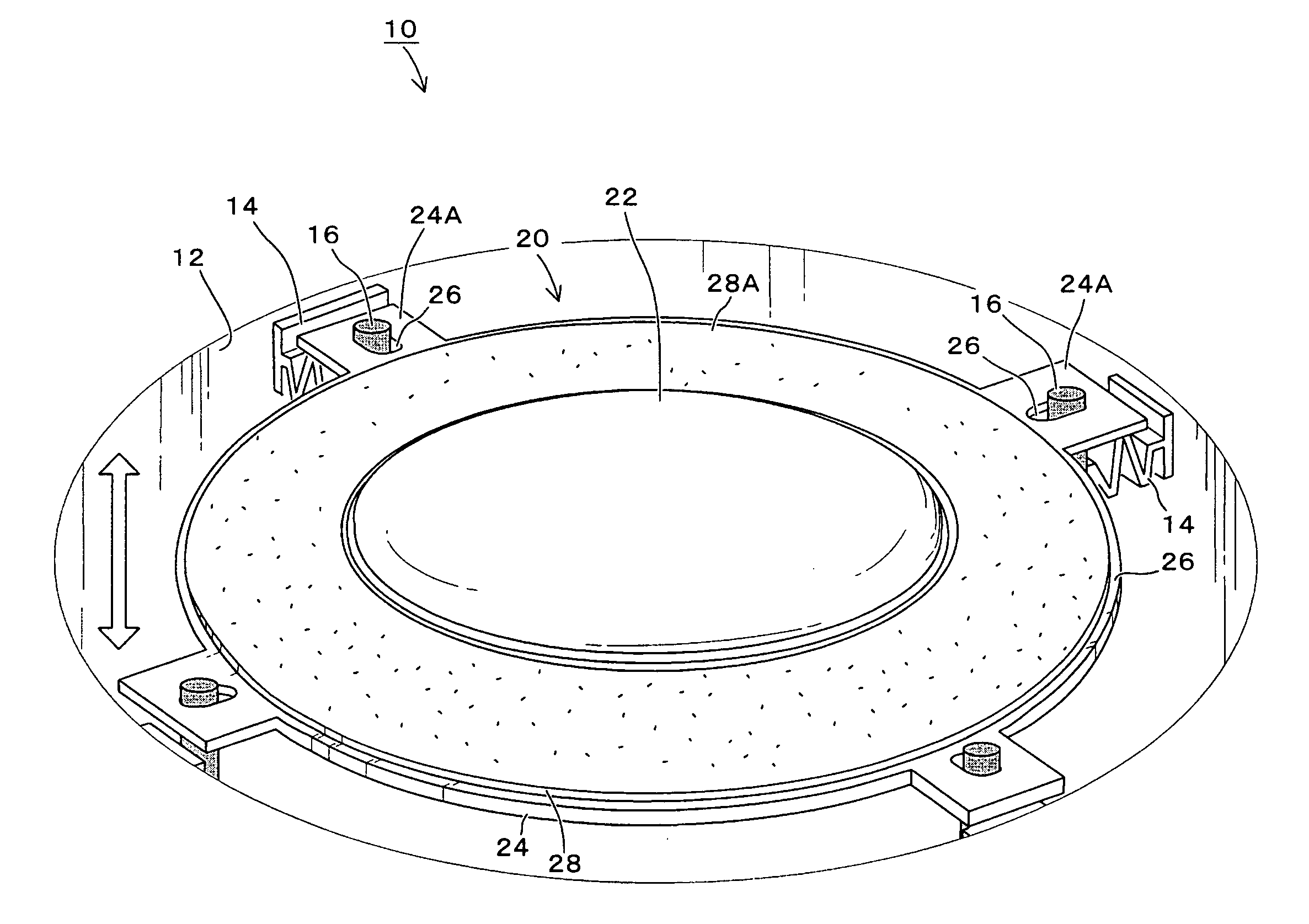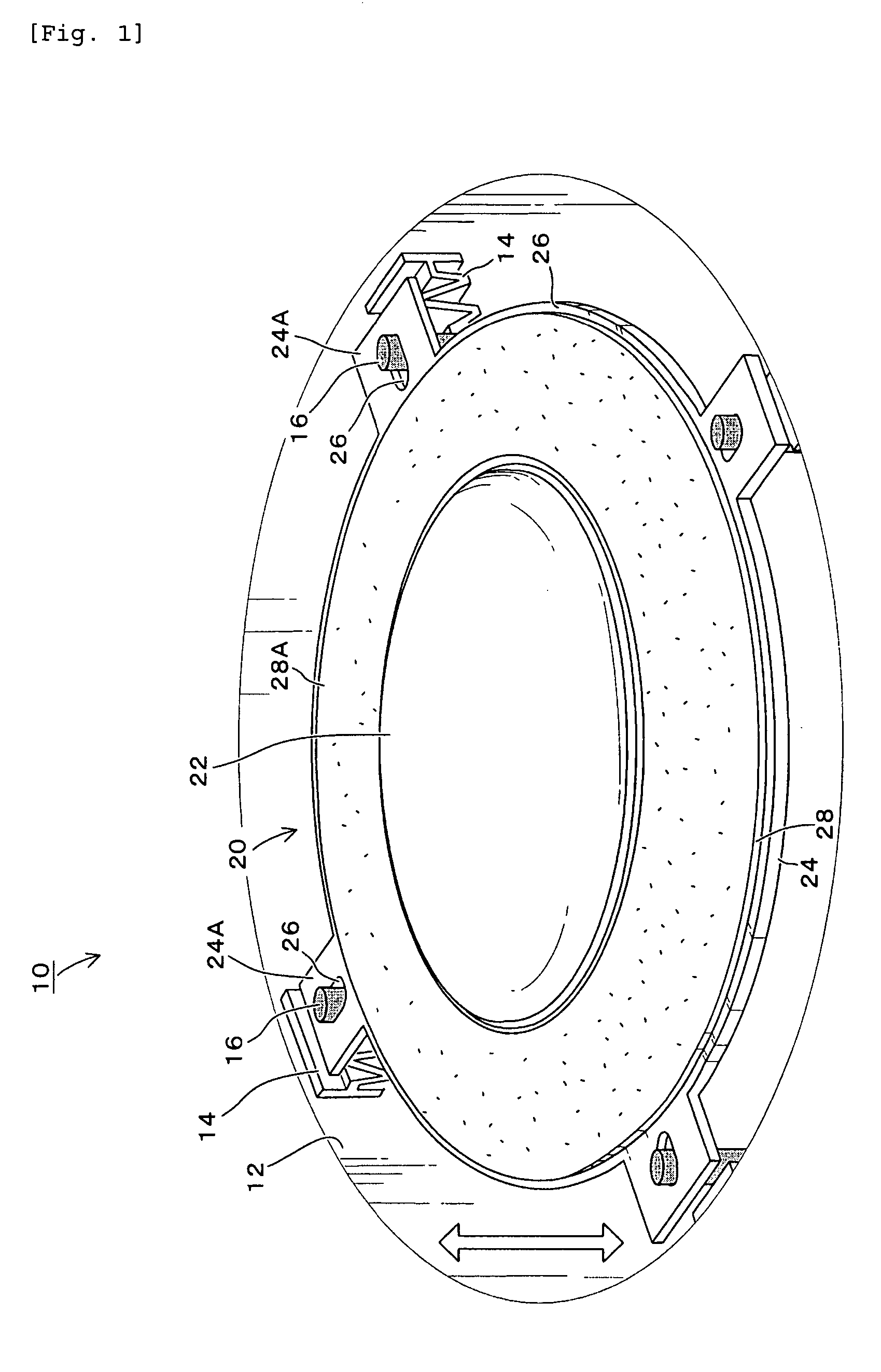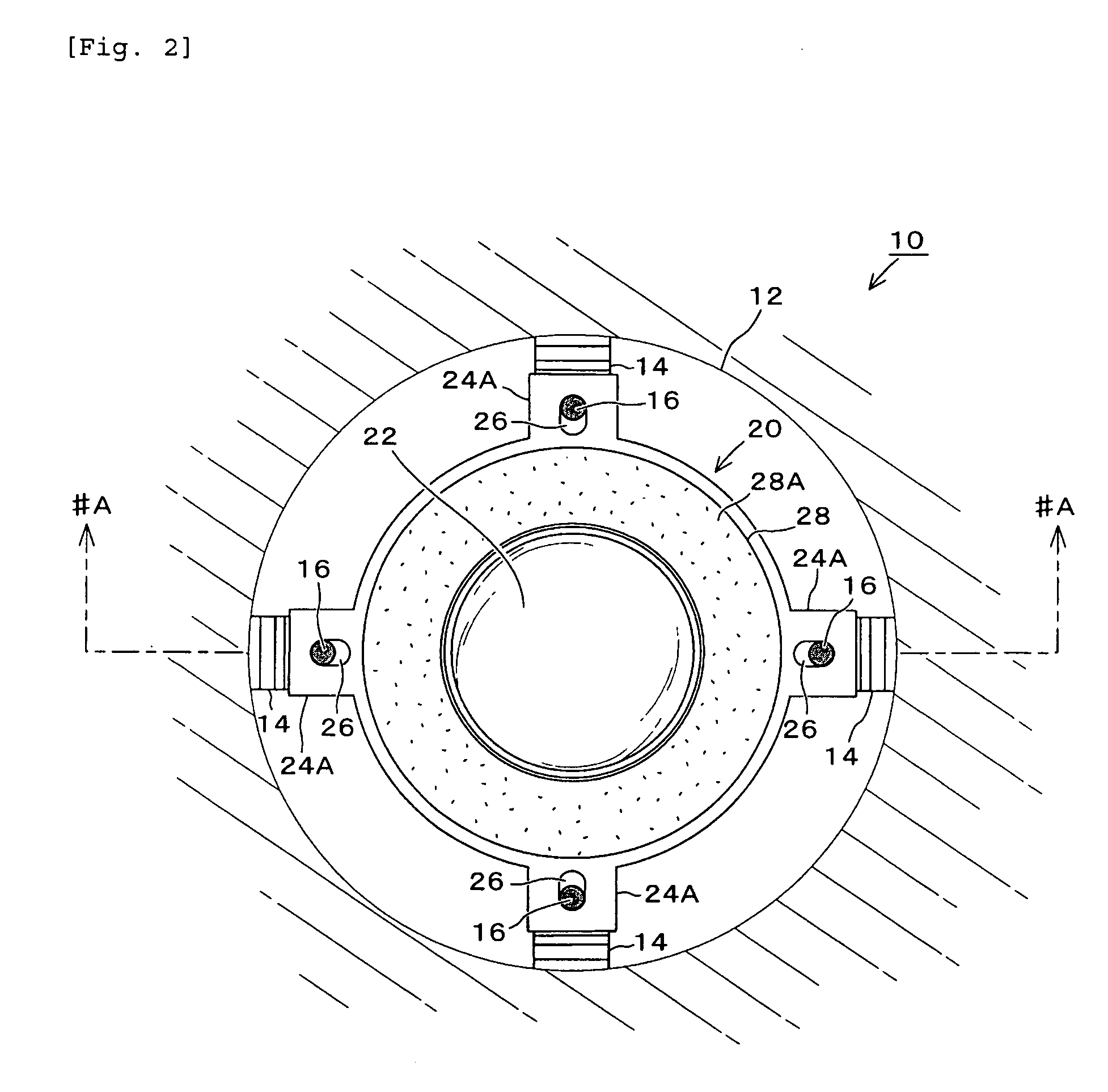Driving device
a technology of driving device and lens barrel, which is applied in the direction of generator/motor, instrument, lens, etc., can solve the problems of reducing the size and cost of the lens barrel, reducing reliability, and being susceptible to so as to stabilize the position, and reduce the effect of gravity
- Summary
- Abstract
- Description
- Claims
- Application Information
AI Technical Summary
Benefits of technology
Problems solved by technology
Method used
Image
Examples
second embodiment
[0060] Referring to FIGS. 10 to 12, a second embodiment is now described. Note that like or corresponding elements to those of the first embodiment are attached with the same references (true for the following embodiments). FIG. 10 is a plan view of a driving device 50 in the present embodiment as viewed in the optical axis direction. FIG. 11 is a cross-sectional view taken along line #C-#C and viewed in the direction of arrow in FIG. 10. Incidentally, FIG. 11A shows a manner a movable member 60 is in a maximal flexure in the upward, FIG. 11B a manner it is free of flexure and FIG. 11C a manner it is in a maximal flexure in the downward.
[0061] A driving device 50 in the present embodiment is structured that a movable member (actuator body) 60, structured to integrate a lens 22 as a displacement object and a piezoelectric vibrator 61, is held by holding guides 52 at tips of springs 14 provided on an inner surface of and directed toward the center of a passageway 12, as shown in FIGS...
third embodiment
[0067] Referring to FIG. 13, a third embodiment of the invention is described. This embodiment shows another example of holding mechanism and urging means. FIG. 13A is a plan view while FIG. 13B is a cross-sectional view taken along line #D-#D and viewed in the direction of arrow in FIG. 13A. The movable member 20 in a driving device 90 of this embodiment is similar in structure to the first embodiment excepting that protrusiones 24A are provided at three points for the vibration plate 24. As shown in FIG. 13, the holding mechanism in this embodiment includes two first holding guides 92 planted on a support 91 in a cantilever form, and one second holding guide 93 having a base 93A rotatably supported on the support 91. Those holding guides 92, 93 are to penetrate through openings 26 in the protrusiones 24A provided on the movable member 20. In a position of the second holding guide 93 closer to the base 93A, a fulcrum 93B is provided to which one end of a wire 94 is connected for pr...
fourth embodiment
[0070] Referring to FIG. 14, a fourth embodiment of the invention is described. Although the foregoing embodiments were structured with a holding mechanism and urging means separately, the present embodiment has a holding mechanism serving also as urging means. In a driving device 90A of this embodiment, the holding mechanism is structured with a plurality of holding guides 98 planted in a cantilever form on a support 91 such that the upper ends thereof are to be spread at a predetermined angle outwardly of a passageway for the movable member 20. The holding guide 98 is formed of a rod member having an elasticity, e.g. a glass fiber or a piano wire, thus serving also as urging means. Due to an elastic force of the holding guide 98, a tensile force is applied, from an inner to outer of the movement passage of the movable member 20, to the outer periphery of the movable member 20 in a direction nearly orthogonal to a movement of the movable member 20. Hooks or evaginations may also be...
PUM
 Login to View More
Login to View More Abstract
Description
Claims
Application Information
 Login to View More
Login to View More - R&D
- Intellectual Property
- Life Sciences
- Materials
- Tech Scout
- Unparalleled Data Quality
- Higher Quality Content
- 60% Fewer Hallucinations
Browse by: Latest US Patents, China's latest patents, Technical Efficacy Thesaurus, Application Domain, Technology Topic, Popular Technical Reports.
© 2025 PatSnap. All rights reserved.Legal|Privacy policy|Modern Slavery Act Transparency Statement|Sitemap|About US| Contact US: help@patsnap.com



